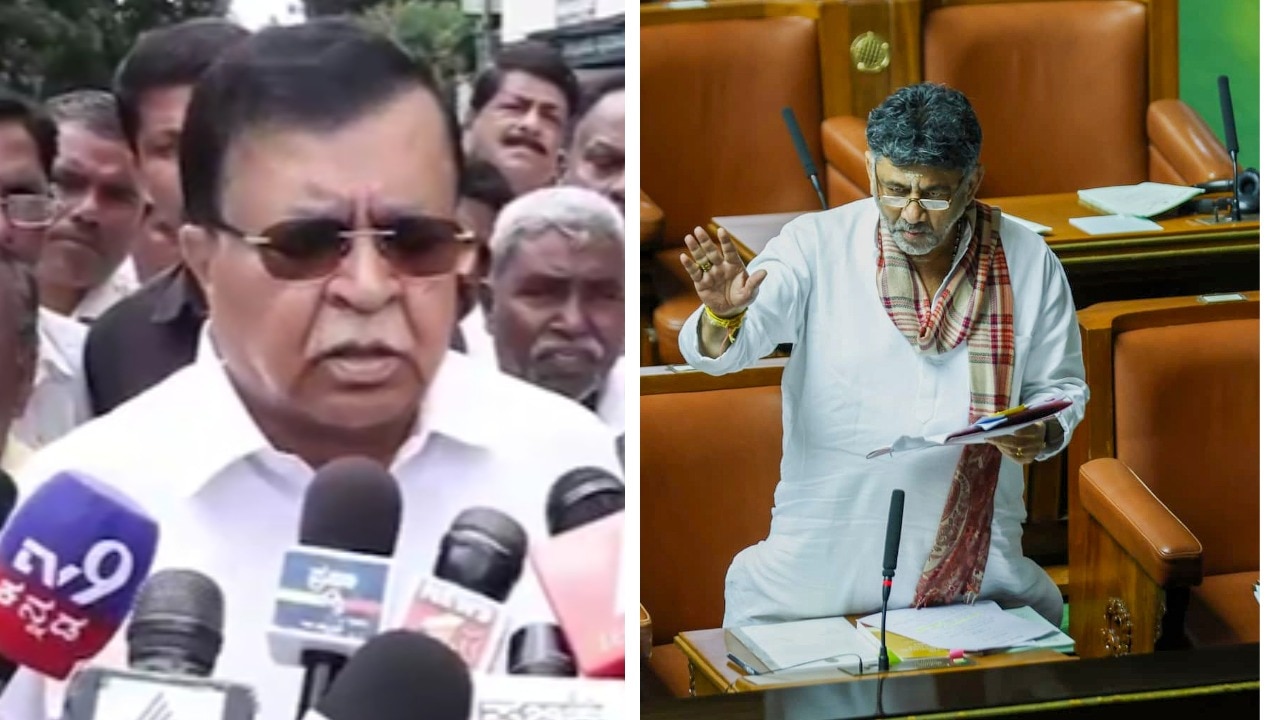ARTICLE AD BOX
BJP MP Anurag Thakur's interaction with students, where he suggested "Hanumanji was the first man in space", is problematic on multiple counts. The children said it was Neil Armstrong, and not Yuri Gagrin, who travelled to space first. The double rot is that the students were unaware of a basic fact while a parliamentarian was presenting mythology as history on National Space Day.

BJP MP Anurag Thakur interacted with students during an exhibition at PM Shri Jawahar Navodaya Vidyalaya, Pekhubela, in Una on the occasion of National Space Day (August 23). (Image: X/IAnuragThakur)
"Who was the first man to travel to space?" The basic general knowledge and science question was asked by BJP MP and former minister Anurag Thakur. "Neil Armstrong!" the children shouted in unison.
"I think it was Hanumanji," Thakur replied during a school interaction in Himachal Pradesh's Una, in a video he later shared on X.
Both the answers are far from correct.
The first human to journey into space was Soviet cosmonaut Yuri Gagarin, who orbited Earth in 1961. Armstrong of the US, in 1969, became the first human to walk on the Moon.
That's a classic case of double rot. There were two lapses here—students not knowing the correct answer, and the leader reinforcing inaccuracy, by packaging mythology as history and not correcting the children.
Then, there is also a wider failure to nurture scientific temper and fact-based learning. Article 51 A (h) of the Constitution mandates the state to promote scientific temper. Here, it perhaps left the chat.
Yes. However, Thakur's intention must have been to decolonise young minds and encourage independent thinking, aligning with Prime Minister Narendra Modi's "transformative vision of dismantling colonial remnants and restoring pride in India's Sanatan values, part of his "Paanch-Pran".
However, decolonisation and pride in our own culture doesn't mean packaging mythology in the name of science and history.
When the students answered Neil Armstrong in unison, Thakur said: "I feel it was Hanumanji. This shows that our tradition, knowledge, and culture that are thousands of years old are important. If we don't learn about our own, we will remain limited to what the British taught us."
"We still see ourselves as we are now. So, I would like to request the principal and all of you to think out of the textbooks and take a look at our nation, our traditions, our knowledge. If you look at it from that direction, you will find a lot of things to see," the 50-year-old MP was heard saying.
NEIL ARMSTRONG REVEALS THE STATE OF OUR EDUCATION
The state of our education was also exposed as the schoolchildren shouted Neil Armstrong in unison.
Anurag Thakur, while forwarding his Hanuman theory, didn't even pause to correct the students that Yuri Gagarin had travelled to space 8 years before Armstrong set foot on the Moon.
In a country where public school education can't even be called average, this is a howler by a parliamentarian.
There is a need to teach students to distinguish between fact and fiction, even as we try to instil pride in them of our history and culture. The art of making that distinction is a crucial part of education.
Teach mythology by all means, but as mythology.
MYTHOLOGY SHOULDN'T BE PASSED OFF AS HISTORY
History and mythology are different. They often blur when epic tales like the Ramayana and Mahabharata, beholder of faith, are mistaken for documented fact.
Mythology can gain historical weight when it is supported by archaeological and material findings, as seen with the ancient submerged structures off the coast of Gujarat, which even archaeologists and scientists have linked to the city of Dwarka from the Mahabharata, though the debate continues.
Similarly, Troy was long considered fictional until 19th-century excavations revealed a real city resembling Homer's descriptions.
However, many stories remain unverified, and lack material evidence. Without scientific proof, these tales remain powerful cultural narratives but can't be taught as history. So it is best to avoid such claims as documented history.
The crucial line is drawn by evidence where material findings complement literary references.
On Thakur's "Hanumanji" claim, one person even fact-checked the MP, saying, "The first space traveller was Hiranyaksha, who hid the Earth". Even going by mythology, Anurag Thakur wasn't right in calling Hanuman the "first space traveller", the X user claimed.
Yes, they fact-checked the MP, but the thin line of distinction we spoke about applies to them as well. Now, even others may offer some other more mythological names or alternative claims, in jest or in all seriousness, but without evidence, these don't become history. Until proven otherwise with solid proof, Yuri Gagarin will remain established as the first man in space. Children need to be taught the distinction, and parliamentarians need to focus on improving quality of education.
- Ends
Published By:
Sushim Mukul
Published On:
Aug 24, 2025
Tune In



.png)
.png)
.png)
















 9 hours ago
4
9 hours ago
4









 English (US) ·
English (US) ·